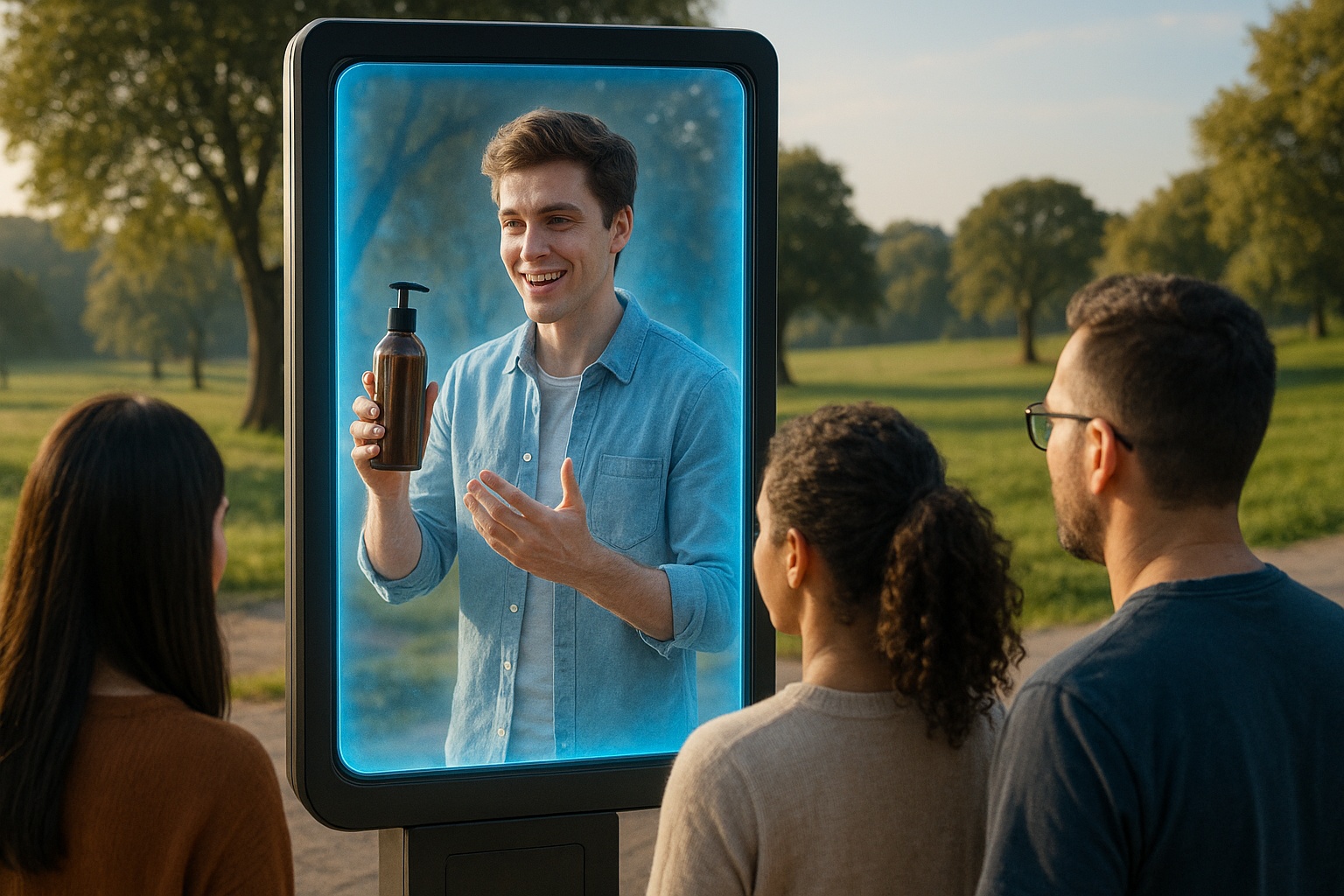Marketing has always been about capturing attention and evoking emotion. In today’s fast-paced, digitally saturated world, brands must go beyond visuals and audio to stand out. Enter scent marketing, a sensory marketing strategy that taps into the olfactory system to forge powerful emotional bonds between consumers and brands. While scent marketing has long been utilised in physical retail environments, modern technology now enables it to be seamlessly integrated into digital campaigns through smart diffusers, blending the physical and virtual worlds into an immersive, memorable experience.
This blog explores how scent marketing operates in the digital space, leveraging smart diffusers and supported by data, personalisation, and Iot infrastructure. From the psychological principles underpinning scent to real-world applications in e-commerce, gaming, and advertising, this comprehensive guide covers how digital scent marketing works—and why it matters.
The Unique Power of Scent in Marketing
Scent holds a unique and powerful position among the human senses. While sight and sound are processed through the thalamus, olfactory signals bypass this and travel directly to the limbic system, which is the brain’s centre for emotions and memory. Within the limbic system, the amygdala and hippocampus play key roles in processing emotional responses and recalling past experiences, making scent inherently emotional and deeply tied to memory.
This neurological connection means that scents have a more profound impact than we might initially realise. Research consistently shows that smells can trigger memories and emotions more vividly than visual or auditory stimuli. One study found that people can recall a scent with approximately 65% accuracy after a year, a stark contrast to visual memory, which declines to about 50% accuracy after just three months. According to the Sense of Smell Institute, 75% of human emotions are driven by the sense of smell.
For years, marketers have harnessed this power of scent in physical spaces. Hotels often infuse their lobbies with signature fragrances, stores use scent to encourage longer browsing, and luxury automotive brands have scented their showrooms to evoke a sense of exclusivity and high-end appeal. Today, with the rise of smart diffusers and the growing role of digital connectivity, this olfactory marketing strategy is expanding beyond brick-and-mortar locations. Marketers can now incorporate scents into online and hybrid experiences, enhancing customer engagement in novel, sensory-rich ways.
What Are Smart Diffusers?
Smart diffusers are sophisticated aroma dispersal devices that combine modern technology with the power of scent marketing. These devices are designed to offer greater precision, programmability, and remote control compared to traditional diffusers. By connecting to Wi-Fi or Bluetooth, smart diffusers can be controlled through mobile apps or cloud-based software platforms, enabling seamless integration into digital ecosystems. Some of the more advanced models even incorporate artificial intelligence (AI) capabilities, Internet of Things (IoT) integrations, and programmable application programming interfaces (APIs) that enable marketers to connect them to a wide array of digital systems.
Key Features:
- Wi-Fi or Bluetooth connectivity for easy control from mobile devices
- Cloud-based control panels for centralised management
- Fragrance scheduling and intensity customisation to align with customer preferences
- Integration with CRM or e-commerce platforms for a personalised customer experience
- Data analytics and performance tracking to measure effectiveness and optimise scent strategies
These innovative features allow brands to align scent with digital triggers, customer behaviours, and personalised experiences in real-time. By automating scent delivery and adapting it to specific contexts, smart diffusers enable companies to create immersive, multisensory environments while maintaining a highly personalised, human touch.
The Core Mechanics of Digital Scent Marketing
To understand how scent marketing works in digital campaigns with smart diffusers, it helps to break the process into five fundamental mechanisms:
1. Strategic Scent Placement
1. Strategic Scent Placement
The first step involves strategically placing smart diffusers in areas where consumers interact. While traditional physical locations, such as retail stores, events, or showrooms, are still highly effective for scent marketing, digital integration expands the possibilities. The reach now extends to:
- Homes (via consumer-owned diffusers)
- Smart offices
- Immersive experience centres
- Co-branded venues
- Personalised product delivery (e.g., packaging)
For example, a customer browsing an online wine shop might experience a subtle scent of oak or citrus via their smart diffuser, enhancing the online shopping experience with an additional emotional and sensory layer. This approach transforms ordinary digital experiences into rich, multi-sensory encounters.
2. Scent Triggering via Digital Integration
2. Scent Triggering via Digital Integration
Digital scent marketing leverages real-time triggers that synchronise scent releases with digital actions. When a user engages with a website or app, smart diffusers can respond accordingly:
- A website loading screen initiates a fragrance burst
- A virtual product demo triggering a matching scent
- An online checkout scent that creates a reward or satisfaction response
- Push notifications that are coupled with scent release (e.g., a fresh coffee scent with a café offer)
This integration connects the digital content directly to the consumer’s immediate environment, turning virtual interactions into tangible, sensory experiences that deepen emotional engagement. By creating this real-time synchronisation, brands can provide a uniquely immersive atmosphere for customers.
3. Personalisation Through AI and Behavioural Data
3. Personalisation Through AI and Behavioural Data
With the advent of AI and machine learning, brands can analyse vast amounts of user data to offer personalised scent experiences. These systems take into account:
- Preferences from user profiles or app usage
- Geographic or climate-based scent adjustment
- Emotional state prediction (based on biometric or behavioural cues)
- Purchase history (e.g., earthy scents for nature-related product lines)
AI allows for automatic adjustments to the scent type, intensity, and delivery frequency, ensuring the experience is always relevant and tailored to the consumer’s preferences. This level of personalisation heightens emotional connections and enhances the overall experience, resulting in stronger brand loyalty and engagement.
4. Multi-Sensory Experience Design
4. Multi-Sensory Experience Design
Scent can be incredibly powerful on its own, but when combined with visuals, sounds, and interactivity, it creates a truly immersive experience. Marketers can craft multi-sensory campaigns that engage multiple senses simultaneously:
- A matching scent accompanies a video commercial
- AR filters on social media pair with smart diffuser activation
- Digital art installations include ambient scent experiences for remote viewers
These sensory-rich campaigns not only capture attention but also evoke emotions and create lasting memories. By using scent as part of a broader, multi-sensory narrative, brands can create more memorable and impactful experiences for consumers, driving deeper connections with the brand.
5. Analytics and Optimisation
5. Analytics and Optimisation
5. Analytics and Optimisation
Smart diffusers are equipped to collect valuable usage data, providing brands with insights into customer behaviour and the effectiveness of their scent campaigns. By tracking metrics like:
- Most popular scent profiles
- User response patterns
- Engagement duration per scent experience
- Conversion rates from scent-triggered interactions
Marketers can analyse this data to optimise their campaigns. A/B testing of different scent profiles can help refine the approach, while continuous monitoring of real-time data allows for the fine-tuning of campaigns to improve customer satisfaction and engagement over time. This data-driven approach enables marketers to adjust their strategies based on concrete, actionable feedback, ensuring the scent experiences always hit the mark.
Use Cases: How It’s Being Applied Today
1. E-Commerce
1. E-Commerce
Online retailers are using scent to enhance shopping experiences. A beauty brand may trigger a floral scent when customers explore a new fragrance line. Luxury goods sites might use leather or woody notes to evoke premium craftsmanship.
2. Virtual Reality & Gaming
2. Virtual Reality & Gaming
VR companies like Olorama are developing scent-enabled headsets. Whether you’re exploring a jungle in a VR game or walking through a virtual bakery, scents make it feel real. These experiences are especially potent in therapeutic or educational simulations.
3. Smart Packaging and Unboxing
3. Smart Packaging and Unboxing
Brands are embedding scent cartridges into product packaging. When the box is opened, the scent aligns with the product message. This amplifies unboxing experiences, encouraging customers to post about their sensory experience on social media.
4. Digital Out-of-Home Advertising (DOOH)
4. Digital Out-of-Home Advertising (DOOH)
Digital billboards are now being equipped with scent-emitting devices. An ad for freshly baked cookies might emit the real scent of vanilla and chocolate, enticing passersby. These are already being tested in high-traffic mall areas.
5. Smart Homes and Subscriptions
5. Smart Homes and Subscriptions
Subscription services now include smart diffusers that deliver new scents monthly. These systems can be connected to smart assistants like Alexa or Google Home and respond to commands like “Play a relaxing scent” or “Set mood for dinner.”
Emotional and Business Benefits of Digital Scent Marketing
Integrating scent into digital campaigns offers numerous benefits, both psychological and commercial:
1. Deeper Emotional Bonding
1. Deeper Emotional Bonding
Scent has a unique ability to evoke deep emotional responses because it directly connects with the brain’s limbic system, the area responsible for emotion and memory. When brands incorporate comforting, energising, or soothing scents into digital experiences, they create lasting emotional impressions. These impressions form powerful psychological anchors that can enhance the way consumers feel about a product or service. Unlike visual or auditory branding alone, scent taps into a more primal connection, allowing consumers to associate positive emotions with the brand, which can increase trust, recall, and affinity over time.
2. Brand Differentiation
2. Brand Differentiation
In an era where digital noise is constant and attention spans are short, standing out requires more than just a great logo or catchy slogan. A unique brand scent becomes a multi-sensory signature, much like a brand’s visual identity or sonic branding. When a customer experiences a consistent and memorable fragrance tied to a brand, whether online or in-store, it reinforces recognition and emotional connection. Over time, this scent becomes synonymous with the brand’s values and customer promise. In a crowded marketplace, scent can provide the kind of differentiation that fosters loyalty and makes a brand unforgettable.
3. Improved Conversion Rates
3. Improved Conversion Rates
Scent plays a subtle yet powerful role in influencing consumer decision-making. Studies show that certain scents can elevate mood, reduce stress, or evoke feelings of nostalgia—all of which can encourage more spontaneous or impulsive purchases. For example, a warm vanilla or fresh-baked bread scent released at the point of sale—whether in a physical location or via a synced diffuser during an online checkout—can subconsciously nudge customers toward completing a purchase. This multisensory stimulation helps reduce cart abandonment and increases the likelihood of conversion, making scent a practical tool for boosting sales outcomes.
4. Higher Customer Retention
4. Higher Customer Retention
Retention is built on memorable, positive brand experiences, and scent is one of the most effective ways to forge lasting memories. Since the olfactory system is closely tied to long-term memory, customers are more likely to recall a scent-enhanced interaction long after it happens. Brands that create signature scent moments—whether during onboarding, packaging, or in-app experiences—can leave a lasting emotional footprint. This emotional resonance keeps customers coming back because the experience feels familiar, comforting, and unique. Ultimately, scent marketing not only improves customer recall but also strengthens the emotional ties that drive repeat engagement.
5. Shareability and Virality
5. Shareability and Virality
Scent-driven digital campaigns are not just immersive—they’re also inherently shareable. When people encounter something unexpected or emotionally stirring, they’re more inclined to talk about it. Imagine a virtual reality game that releases corresponding scents through a smart diffuser or an unboxing video where the package emits a signature fragrance as it opens. These kinds of multi-sensory, interactive moments are more likely to go viral on social media platforms, generating organic buzz and user-generated content. By tapping into this novelty factor, brands can boost their visibility and audience engagement without solely relying on paid media.
Implementation Strategy for Marketers
For those looking to integrate scent marketing into their digital strategies, consider the following implementation framework:
1. Define Brand Objectives
What do you want the scent to convey—calm, luxury, fun, nostalgia?
2. Select the Right Scents
Work with fragrance designers to align scent profiles with emotional goals.
3. Choose Smart Diffuser Hardware
Ensure your devices are compatible with cloud platforms, APIs, and user personalisation.
4. Integrate with Digital Campaigns
Connect scent triggers with web interactions, app behaviour, livestreams, or notifications.
5. Pilot Test with a Sample Audience
Evaluate how users respond emotionally and behaviorally before full-scale rollout.
6. Monitor and Optimise
Use scent analytics to refine campaigns, adjust timing, and test alternative scent profiles.
Ethical Considerations and Limitations
Despite its promise, scent marketing in digital campaigns must be implemented thoughtfully:
- Consent and Preferences: Always allow users to opt in and customise their scent experience.
- Sensitivity and Allergies: Avoid strong scents that may irritate or cause discomfort to users.
- Data Ethics: Be transparent about how user data is used to personalise scent delivery.
- Hardware Access Gaps: Not all consumers will own or afford a smart diffuser, so campaigns must remain inclusive.
The Future of Scent in Digital Marketing
As the Internet of Senses becomes a reality, scent will play a central role in shaping our digital content experience. Future innovations will likely include:
- Wearable scent pods
- On-demand scent libraries
- Emotion-detecting AI that adjusts scents in real time
- Scent NFTs for limited-edition digital experiences
Just as voice search and visual AI reshaped marketing a decade ago, scent-based engagement is poised to become the next frontier in digital customer experience.
Final Thoughts
Scent marketing has evolved far beyond its traditional use in retail stores, spas, or luxury hotels. With the rise of smart diffusers and advanced digital integrations, it is now making a seamless transition into the digital landscape, reshaping how brands connect with consumers across platforms and environments. From enhancing e-commerce experiences at home to augmenting remote events, unboxings, and hybrid retail moments, scent is becoming a vital component of modern brand storytelling. It taps into the emotional core of human experience, creating a depth of engagement that visuals and sound alone often cannot achieve.
The ability to trigger emotions, enhance memory, and influence behaviour gives scent a distinct advantage in a world saturated with content. When paired with technologies like AI, IoT, and real-time personalisation, scent marketing becomes more than just atmospheric—it becomes strategic. It allows brands to build long-lasting emotional bonds, drive higher engagement, and differentiate themselves in increasingly competitive markets.
As sensory technologies advance and the Internet of Senses becomes more mainstream, brands that embrace olfactory marketing early will stand out. These forward-thinking businesses won’t just attract attention, they’ll leave a lasting impression. In the end, it’s not just what a brand looks or sounds like, it’s what it feels and smells like that people remember.






